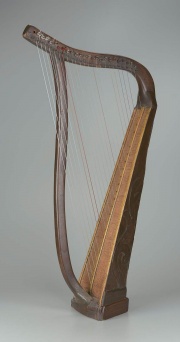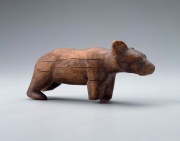Difference between revisions of "Wood"
m (→Description) |
m (→Description) |
||
| Line 16: | Line 16: | ||
Wood is deteriorated by primarily by insect and microbiological infestations. | Wood is deteriorated by primarily by insect and microbiological infestations. | ||
| − | Examples of various woods include: [[beech]], [[cedar]], [[chestnut]], [[fir]], [[larch]], [[linden]], [[mahogany]], [[maple]], [[oak]], [[olive]], [[pine]], [[poplar]], [[walnut]], and [[willow]]. | + | Examples of various woods include: [[beech]], [[cedar wood]], [[chestnut]], [[fir]], [[larch]], [[linden]], [[mahogany]], [[maple]], [[oak]], [[olive]], [[pine]], [[poplar]], [[walnut]], and [[willow]]. |
[[File:72.4167-C34491CR-d1.jpg|thumb|]] | [[File:72.4167-C34491CR-d1.jpg|thumb|]] | ||
Revision as of 06:51, 1 July 2014
Description
The hard, fibrous tissue composing the trunk, branches, and roots of trees and shrubs. Wood is a renewable resource that is abundantly available and versatile in its usefulness. It has been used for tools, structures, and as an art material since earliest times. Wood is primarily composed of cellulose (40-60% ), hemicelluloses (15-25%), lignin (15-40%). It can also contain resins, dyes, tannins, waxes, and oils. Wood is still used throughout the world for lumber, furniture, paper, pulp, and fuel. Over 3000 species of trees produce wood. They are categorized as either hardwood (angiosperm) or softwood (gymnosperm) trees. Identification and characterization of wood are based on the following properties (Gettens and Stout 1966):
1. Color of heartwood (interior mature wood) and sapwood (outer actively growing wood).
2. Visibility and size of growth rings
3. Cell size and variation for spring wood (formed at the beginning of the growing season) and summerwood (formed at the end of the growing season).
4. Size and number of medullary rays
5. Pore size and distribution.
Wood is deteriorated by primarily by insect and microbiological infestations.
Examples of various woods include: Beech, Cedar wood, Chestnut, Fir, Larch, Linden, Mahogany, Maple, Oak, Olive, Pine, Poplar, Walnut, and Willow.
Synonyms and Related Terms
lumber; bois (Fr.); madera (Esp.); madeira (Port.); legno (It.)
Other Properties
Insoluble in water and organic solvents, but will swell and absorb most liquids.
Additional Information
R. J. Gettens and G.L. Stout, Painting Materials, A Short Encyclopaedia, Dover Publications, New York, 1966.
Additional Images
Authority
- Encyclopedia Britannica, http://www.britannica.com Comment: "wood" Encyclopædia Britannica [Accessed November 7, 2001].
- R. Bruce Hoadley, Identifying Wood, The Taunton Press, Newton, CT, 1990
- R. J. Gettens, G.L. Stout, Painting Materials, A Short Encyclopaedia, Dover Publications, New York, 1966
- G.S.Brady, Materials Handbook, McGraw-Hill Book Co., New York, 1971 Comment: p. 874
- Hermann Kuhn, Conservation and Restoration of Works of Art and Antiquities, Butterworths, London, 1986
- Matt Roberts, Don Etherington, Bookbinding and the Conservation of Books: a Dictionary of Descriptive Terminology, U.S. Government Printing Office, Washington DC, 1982
- Pam Hatchfield, Pollutants in the Museum Environment, Archetype Press, London, 2002


